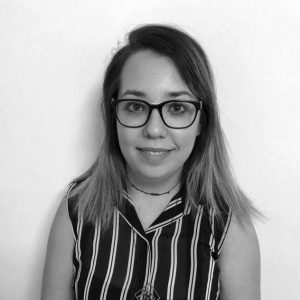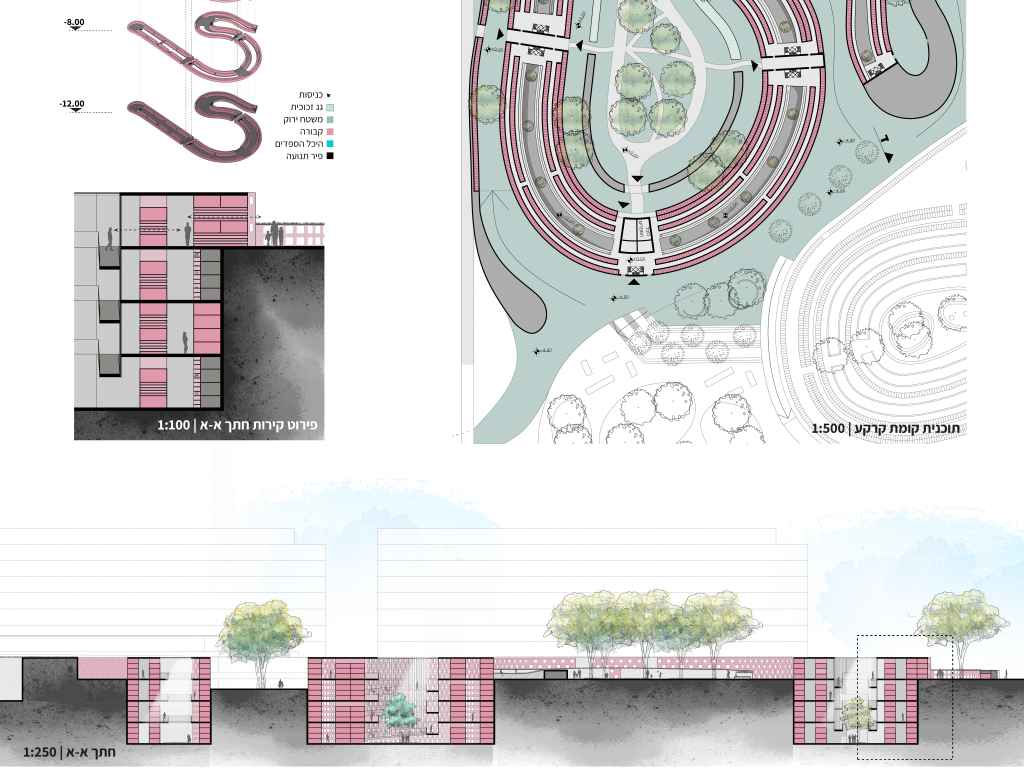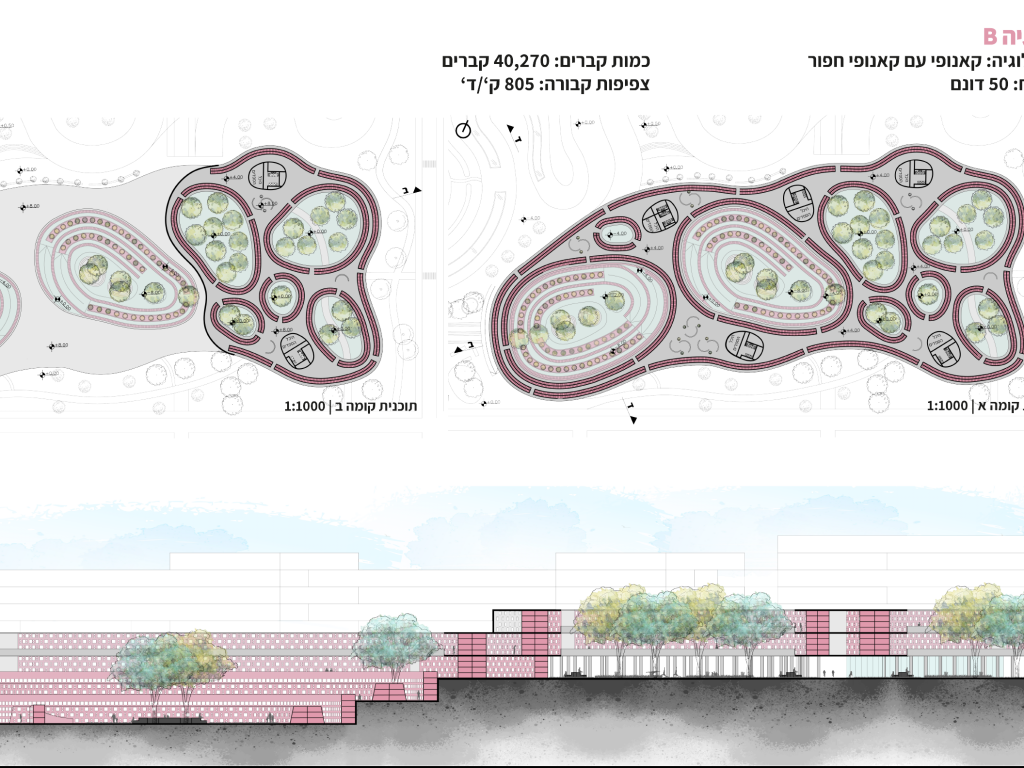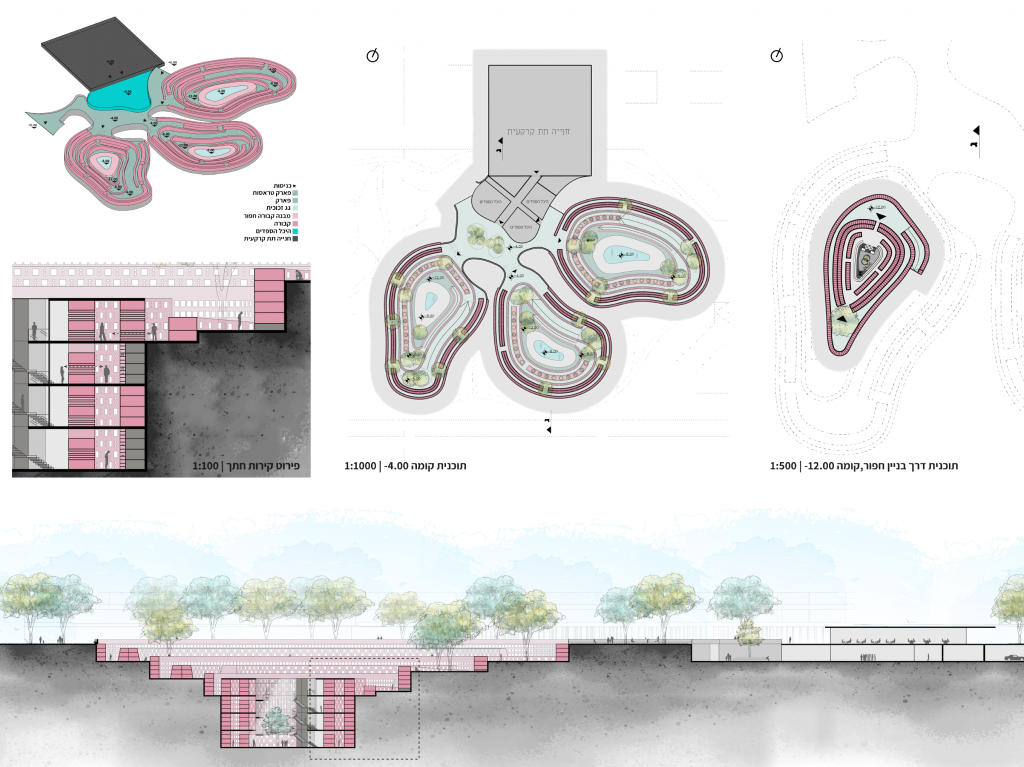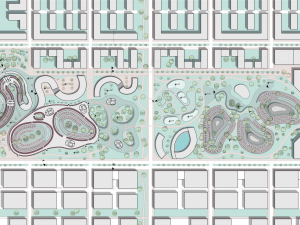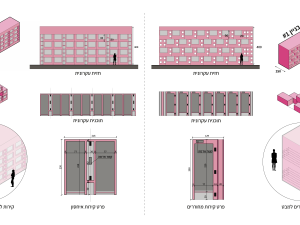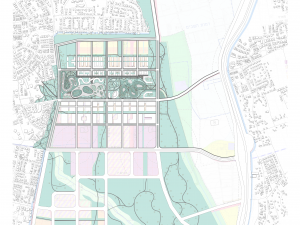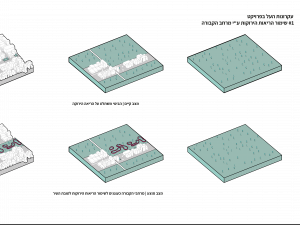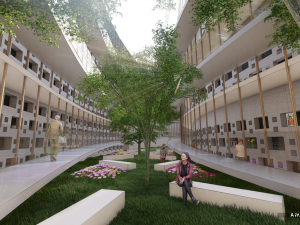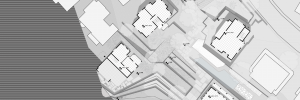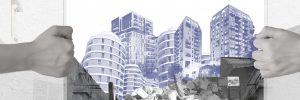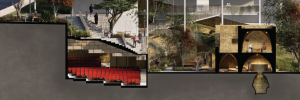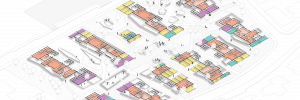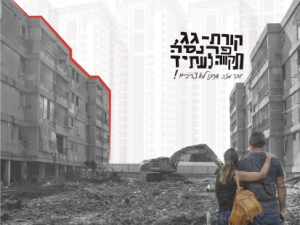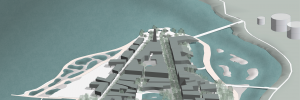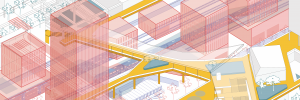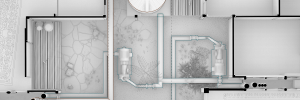A Matter of Life and Death
Cemeteries are the final stop of each human and their eternal dwelling place after death. The deceased acquire ownership of the land in which they are buried and become its permanent resident. In Israel, this phenomenon relates to the Jewish religion, which sees the moving or opening of graves as highly disrespectful to the dead and grants them a legitimate claim to the land. Moreover, the growing demand for burial space has increased the density of burial options. Consequently, these spaces have become denser and less inviting for families visiting their loved ones. The inability to move graves and the growing density of cemeteries create unsustainable spaces that are impossible to integrate into the city, thus generating an urban footprint. The burial spaces become independent, black holes that the city surrounds. In addition, the activity at cemeteries is stipulated by time – for as long as families continue to visit their loved ones. But as generations pass the memory fades away, the dead are forgotten, and the burial grounds are abandoned.
The growing need for burial spaces and their temporal conditionality prompt us to rethink the design of those places and their connection with the city. How can we, as city planners and designers, design sustainable burial grounds? How can we turn the disadvantage of the dead’s eternal claim to the land into an advantage for the city?
The project “A Matter of Life and Death” offers a solution for preserving the green spaces of the city by way of cemeteries. As the city continues to grow, green areas face being replaced by housing, but burial grounds can protect those areas. My project focuses on the industrial zone of Ramat Hasharon, which is an ecologically preserved green area with a large diversity of animals, plants, and trees. An urban master plan for housing in this area, which has been approved, ignores the existing ecological system, although it does preserve an area for a new cemetery.
My project suggests a new alternative for this master plan, integrating the green area with the burial spaces and connecting them with the city.
The growing need for burial space and their stipulation by time, urging us to rethink the design of those places and their connection with the city. How can we, as city planners and designers, design sustainable burial grounds? How can we turn the disadvantage of the eternal claim of the dead to the land, to advantage for the city?
A Matter of life and death project offers a solution to preserve the green spaces of the city with the assistance of the cemeteries. As the city continues to grow, the green areas are being replaced by housing and the burial grounds can protect those areas. My project located in the industrial area of Ramat Hasharon which is a preserved ecological green area with big diversity of animals, plants, and trees. In this area an urban master plan of housing was approved and ignored the existing ecological system, but also preserved an area for a new cemetery.
My project suggests new alternative for this Master plan which integrates the green area with the burial spaces and connects them with the city.


